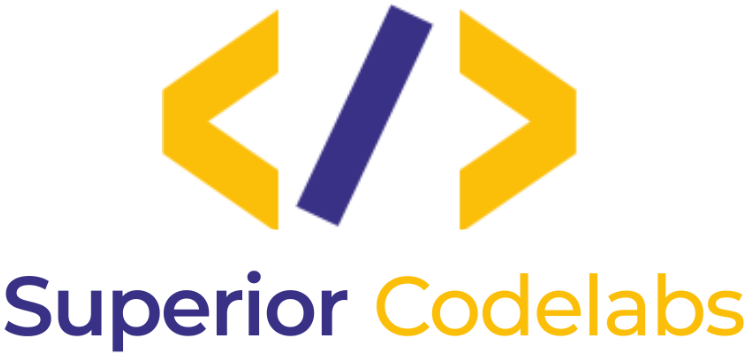In the ever-evolving landscape of technology, businesses are constantly seeking ways to stay competitive and relevant. One of the most transformative developments in recent years has been the integration of artificial intelligence (AI) into IT strategy. AI-driven IT strategies have the potential to revolutionize the way companies operate, but to harness their full potential, it’s essential to align technological goals with the broader business objectives. In this article, we will delve into the significance of aligning AI-driven IT strategy with business goals and explore key steps to achieve this alignment.
The Power of AI in IT Strategy
Artificial intelligence has emerged as a game-changer in IT strategy for several reasons:
- Enhanced Decision-Making: AI can process vast amounts of data at lightning speed, providing businesses with valuable insights to make informed decisions.
- Efficiency and Automation: AI-driven systems can automate routine tasks, reducing operational costs and freeing up human resources for more strategic roles.
- Personalization: AI can analyze customer data to create personalized experiences, improving customer satisfaction and loyalty.
- Predictive Analytics: AI can forecast trends and potential issues, helping businesses proactively address challenges and seize opportunities.
Aligning AI-Driven IT Strategy with Business Goals
To realize the benefits of AI in IT strategy, it is crucial to align these technological goals with the overarching objectives of the business. Here are key steps to achieve this alignment:
1. Define Clear Business Objectives
Start by clearly defining your business objectives. What are your short-term and long-term goals? Identify the specific areas where AI can make a difference, such as sales, marketing, customer service, or supply chain management.
2. Identify AI Opportunities
Once you have defined your business objectives, identify opportunities where AI can drive value. For example, if your goal is to increase customer retention, AI-powered chatbots or recommendation engines may be relevant.
3. Build a Cross-Functional Team
AI implementation should involve collaboration between IT teams and various business units. Form a cross-functional team that includes IT experts, data scientists, and representatives from relevant departments to ensure alignment.
4. Data Collection and Analysis
Data is the fuel that powers AI. Ensure that you have a robust data collection and analysis infrastructure in place. Clean, high-quality data is essential for AI algorithms to deliver accurate results.
5. Develop a Roadmap
Create a strategic roadmap that outlines how AI will be integrated into your IT strategy over time. Prioritize projects based on their potential impact on business goals and the resources available.
6. Monitor and Measure
Implement key performance indicators (KPIs) to measure the impact of AI on your business objectives. Regularly monitor and analyze these metrics to make necessary adjustments to your AI-driven IT strategy.
7. Adapt and Evolve
The technology landscape is ever-changing. Stay flexible and be prepared to adapt your AI strategy as new technologies and opportunities emerge. Continuous learning and innovation are key to staying competitive.
Conclusion
AI-driven IT strategy has the potential to revolutionize how businesses operate and compete in today’s digital age. However, the success of AI integration hinges on the alignment of technological goals with broader business objectives. By following the steps outlined in this article, companies can harness the full power of AI to drive growth, efficiency, and innovation while staying ahead of the competition.
1. What is AI-Driven IT Strategy, and why is it important for businesses?
AI-Driven IT Strategy refers to the integration of artificial intelligence into a company’s IT plans and operations. It’s essential because AI can enhance decision-making, automate tasks, personalize customer experiences, and predict trends, all of which can significantly impact a business’s competitiveness and efficiency.
2. How do I determine which areas of my business can benefit most from AI integration?
Identifying the areas where AI can have the most significant impact requires a thorough analysis of your business objectives. Look for tasks or processes that could benefit from automation, data-driven insights, or enhanced customer experiences. Collaborate with cross-functional teams to pinpoint opportunities effectively.
3. What are the primary challenges in aligning AI-Driven IT Strategy with business goals?
Some common challenges include data quality issues, the need for skilled talent, budget constraints, and the ever-evolving nature of AI technology. Effective collaboration between IT and business units can also be challenging but is crucial for alignment.
4. How can I measure the ROI (Return on Investment) of AI integration in my business?
Measuring ROI for AI initiatives involves tracking key performance indicators (KPIs) related to your business objectives. For example, if your goal is to increase sales, you might measure revenue growth, conversion rates, or customer retention. Analyzing these metrics over time will help gauge the impact of AI on your business’s success.
5. What steps can a small or medium-sized business take to get started with AI-Driven IT Strategy?
Begin by defining clear business objectives and identifying small-scale AI projects that align with those objectives. These projects can serve as proofs of concept and help build the necessary expertise and infrastructure. Consider leveraging cloud-based AI services and collaborating with AI consultancy firms if you lack in-house expertise.
For more information, visit Superior Codelabs.
Shaikh Fakruddin is the Founder and CEO of Superior Codelabs.





